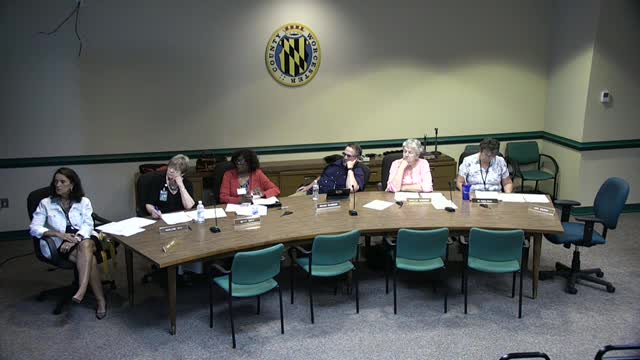Planning Commission reviews watershed growth allocations for Isle of Wight and Newport
May 08, 2025 | Worcester County, Maryland
This article was created by AI summarizing key points discussed. AI makes mistakes, so for full details and context, please refer to the video of the full meeting. Please report any errors so we can fix them. Report an error »

During the recent Special Board of Zoning Appeals meeting held on May 8, 2025, in Worcester County, Maryland, significant discussions centered around the management of water resources and growth planning within the region's three watersheds: Isle of Wight, Lower Pocono, and Newport. The meeting highlighted the complexities involved in accommodating projected population growth while ensuring sustainable development practices.
The planning team presented an analysis of how growth areas are categorized by watershed, emphasizing the need to assess potential impacts on existing water systems. With an estimated increase of 4,800 residents in the planning period, the region anticipates a demand for approximately 2 million gallons of water and wastewater services. This projection raises concerns about the capacity of current infrastructure and the potential for nutrient loading from stormwater and wastewater, which could exacerbate existing environmental issues.
The discussion also touched on the role of local towns in managing growth. While some development will occur within the county, a portion will be shared with nearby towns, including Ocean City. The towns of Berlin, Snow Hill, and Pocomoke expressed their preferences for future development, with Berlin focusing on infill and limited expansion, while the other two towns identified areas with potential for more significant growth.
A critical point raised was the necessity for larger subdivisions to connect to public water and sewer systems, particularly for developments exceeding 100 units. However, current agricultural zoning limits the number of units that can be developed on septic systems, which may restrict housing availability in rural areas.
The meeting also addressed the challenges posed by saltwater intrusion affecting local wells, necessitating deeper drilling to access cleaner aquifers. The planning team noted ongoing efforts to interconnect water and wastewater systems to optimize resource use, following recommendations from a 2011 water resource evaluation.
In conclusion, the discussions at the Special Board of Zoning Appeals meeting underscored the delicate balance between accommodating growth and protecting the region's water resources. As the planning commission continues to refine its strategies, the implications of these decisions will be crucial for the sustainable development of Worcester County. Future meetings will likely provide further insights into how these challenges will be addressed.
The planning team presented an analysis of how growth areas are categorized by watershed, emphasizing the need to assess potential impacts on existing water systems. With an estimated increase of 4,800 residents in the planning period, the region anticipates a demand for approximately 2 million gallons of water and wastewater services. This projection raises concerns about the capacity of current infrastructure and the potential for nutrient loading from stormwater and wastewater, which could exacerbate existing environmental issues.
The discussion also touched on the role of local towns in managing growth. While some development will occur within the county, a portion will be shared with nearby towns, including Ocean City. The towns of Berlin, Snow Hill, and Pocomoke expressed their preferences for future development, with Berlin focusing on infill and limited expansion, while the other two towns identified areas with potential for more significant growth.
A critical point raised was the necessity for larger subdivisions to connect to public water and sewer systems, particularly for developments exceeding 100 units. However, current agricultural zoning limits the number of units that can be developed on septic systems, which may restrict housing availability in rural areas.
The meeting also addressed the challenges posed by saltwater intrusion affecting local wells, necessitating deeper drilling to access cleaner aquifers. The planning team noted ongoing efforts to interconnect water and wastewater systems to optimize resource use, following recommendations from a 2011 water resource evaluation.
In conclusion, the discussions at the Special Board of Zoning Appeals meeting underscored the delicate balance between accommodating growth and protecting the region's water resources. As the planning commission continues to refine its strategies, the implications of these decisions will be crucial for the sustainable development of Worcester County. Future meetings will likely provide further insights into how these challenges will be addressed.
View full meeting
This article is based on a recent meeting—watch the full video and explore the complete transcript for deeper insights into the discussion.
View full meeting
